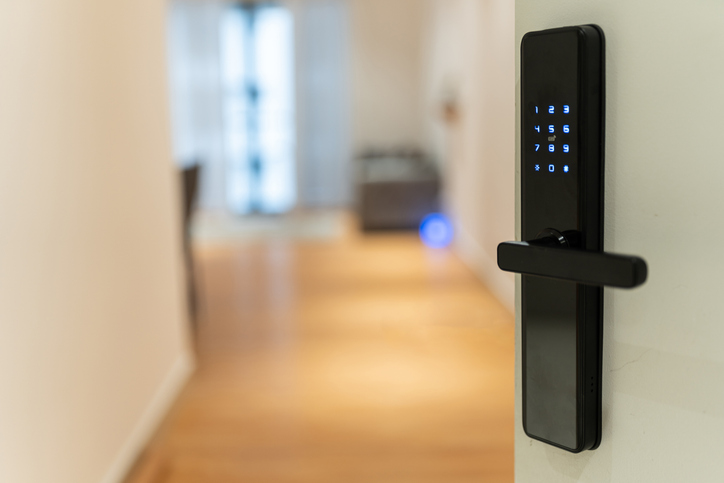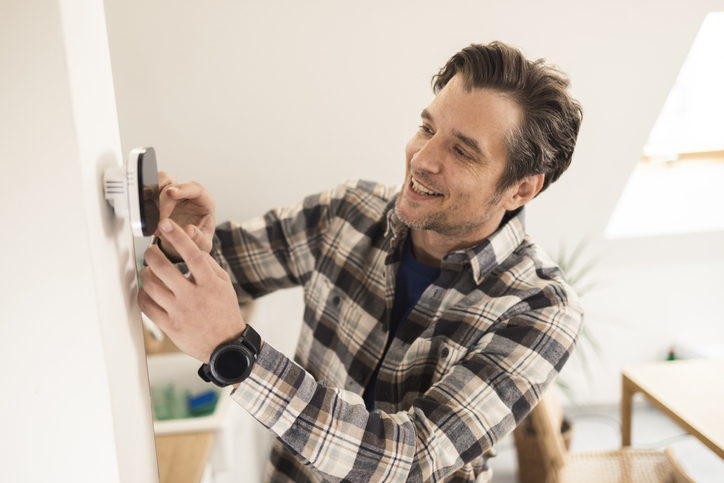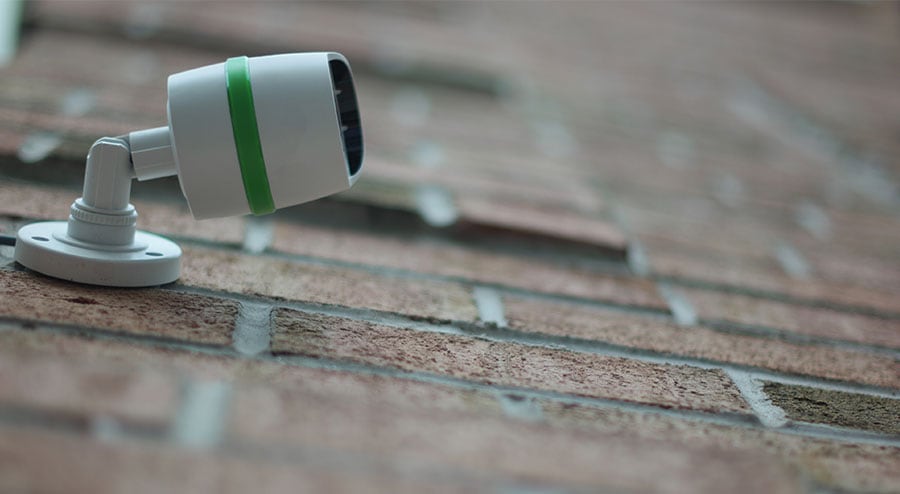Ensuring the security of our homes and properties is of utmost importance. One key aspect of achieving this is by focusing on door security and reinforcing entryways and locks. In this guide, we will explore various strategies and measures to strengthen entryway doors, choose high-security locks, and implement advanced security features, providing valuable insights to enhance overall door security and protect against potential threats.

Reinforcing Entryway Doors
Reinforcing entryway doors is a crucial step in enhancing home security and protecting against potential break-ins. By implementing various techniques and measures, such as strengthening wooden doors, installing steel doors, and securing entry doors with glass panels, homeowners can significantly fortify their entryways and provide a stronger deterrent against unauthorized access.
Strengthening Wooden Doors
Wooden doors, while aesthetically pleasing, can be susceptible to forced entry if not properly reinforced. By taking steps to strengthen wooden doors, homeowners can significantly enhance their security.
Installing a high-quality deadbolt lock is a fundamental step in securing a wooden door. Opt for a deadbolt that extends at least one inch into the door frame when fully engaged. The longer the throw of the deadbolt, the more resistant it is to force entry. Ensure the strike plate is securely attached using longer screws, preferably three inches, to anchor it firmly to the door frame. This reinforces the connection between the door and the frame, making it harder to kick in.
Standard hinges on wooden doors are often secured with short screws, making them susceptible to being easily forced or removed. Replace them with heavy-duty hinges that feature longer screws. The extended screws provide a more secure attachment, reinforcing the door and making it more resistant to forced entry attempts.
Door reinforcement kits are specialized products designed to strengthen the door frame and prevent it from splitting during a forced entry attempt. These kits typically include metal plates and security hardware. Door jamb reinforcement plates are installed on the door frame to provide additional strength and stability. Security plates can be attached to the door edge to reinforce it and deter prying or forced entry.
The edges of a wooden door, where it meets the door frame, are vulnerable to forced entry. Reinforce these weak points by installing metal edge guards or door edge reinforcers. These reinforcements add strength to the door’s edges, making them more resistant to being kicked or forced open.
Consider replacing hollow-core wooden doors with solid core doors. Hollow-core doors have a honeycomb or cardboard core, which makes them easier to break or kick in. In contrast, solid core doors are constructed with a solid material, such as wood or composite, providing increased durability and resistance to forced entry.
Installing Steel Doors
Steel doors offer superior strength and durability compared to wooden doors. Steel doors are highly resistant to forced entry, as they are constructed with strong and durable materials. They are also fire-resistant and provide excellent insulation.
Ensure that the steel door meets industry standards for security and fire ratings. Proper installation is crucial to ensure the door fits securely in the frame and has reinforced hinges and a high-quality lock.
While steel doors are inherently robust, additional reinforcement measures can further enhance their security. These include reinforcing the door frame with metal plates, using security bars or door jammers, and installing a multi-point locking system for added protection.
Securing Entry Doors With Glass Panels Or Windows
Entry doors with glass panels or windows present unique security challenges. However, there are strategies to enhance security without compromising aesthetics. Consider using laminated or impact-resistant glass for the windows or glass panels in the door. These types of glass are designed to withstand significant force and are difficult to break. They provide an extra layer of protection against forced entry attempts.
Impact-resistant glass is made by sandwiching a layer of polyvinyl butyral (PVB) between two layers of glass. When struck, the glass may crack, but the interlayer holds it together, preventing easy access. Laminated glass consists of multiple layers of glass with a PVB interlayer, offering similar security benefits.
Choosing High-Security Locks
Selecting the right high-security locks is crucial for ensuring the safety and protection of your home. In this section, we will explore the different types of locks available, the benefits of deadbolt locks, techniques for strengthening them, and the pros and cons of keyless entry systems, equipping you with the knowledge to make informed decisions for maximum security.
Types Of Locks For Maximum Security
When it comes to choosing high-security locks for your entryway, understanding the different lock types is essential. Deadbolt locks are widely recognized as one of the most secure types of locks. They feature a solid metal bolt that extends into the door jamb when locked, providing substantial resistance to forced entry.
Smart locks offer convenience and advanced security features. They allow keyless entry using a smartphone, keypad, or biometric authentication. Some smart locks also provide integration with home security systems and remote access control. Key-in-knob locks are commonly found in residential settings. While they offer basic security, they are not as robust as deadbolt locks and can be vulnerable to picking or bumping.
Strengthening Deadbolt Locks
Deadbolt locks are a popular choice for maximizing door security. Ensure that the strike plate is securely installed using longer screws that anchor it deep into the door frame. This enhances the lock’s resistance to forced entry attempts.
Properly install the deadbolt lock according to the manufacturer’s instructions. Verify that the bolt extends fully into the strike plate and that the lock operates smoothly without any loose components. Enhance the security of your deadbolt lock by using anti-drill plates and hardened steel bolts. Anti-drill plates are designed to deter drilling attacks, while hardened steel bolts provide increased resistance to physical force.
Exploring Keyless Entry Systems
Keyless entry systems offer convenience and advanced security features. Keyless entry systems eliminate the need for physical keys and offer benefits such as convenience, flexibility in access control, and the ability to track entry activity. However, they may be vulnerable to hacking or electronic tampering, and some systems may require power sources or regular battery replacements.
When selecting a keyless entry system, consider features such as multi-factor authentication (e.g., combining a PIN code with biometric identification), encryption technology to protect data transmission, and compatibility with smart home integration or remote access control.
To enhance security when using keyless entry systems, consider implementing additional measures such as installing security cameras, implementing two-factor authentication, and regularly updating the system’s firmware to address any potential vulnerabilities.
When choosing a keyless entry system, carefully evaluate the features, security protocols, and compatibility with your specific security needs to ensure a reliable and robust solution.
Advanced Security Measures
Implementing advanced security measures is crucial for enhancing the protection and fortification of your entryways. In this section, we will explore the role and installation considerations of door jammers, chains, and security bars, the benefits and integration of electronic locking systems, and the importance of surveillance systems in door security, providing you with valuable insights to elevate your overall security strategy.
Door Jammers, Chains, And Security Bars
Door jammers, chains, and security bars provide additional layers of security to reinforce entryway doors. Door jammers, also known as door wedges or door stops, are portable devices that prevent a door from being forced open by creating a physical barrier between the door and the floor. Security chains allow the door to open partially while maintaining a level of security, and security bars, typically installed horizontally across the door, prevent the door from being forced open.
Door jammers come in various forms, such as wedges, bars, or adjustable devices. Choose a jammer that is sturdy, adjustable, and easy to install. Security chains should be made of heavy-duty materials and installed with strong screws or bolts. Security bars should be made of robust materials and securely mounted to the door frame and the floor or wall.
Electronic Locking Systems
Electronic locking systems offer advanced security features and convenience. Here’s an overview of these systems. Electronic locks utilize electronic components, such as keypads, card readers, or biometric scanners, to grant access to a property. They can offer keyless entry, programmable access codes, remote control, and integration with smart home systems.
Electronic locking systems provide enhanced security through features like encryption, multi-factor authentication, and audit trails that track access activity. They offer convenience by eliminating the need for physical keys, allowing temporary access permissions, and enabling remote access control.
Electronic locks can be integrated into broader security systems, including surveillance cameras, alarms, and access control systems. This integration allows for centralized monitoring, increased control, and enhanced overall security.
Surveillance Systems And Door Security
Surveillance systems, including security cameras, play a vital role in enhancing door security. Security cameras placed strategically near entryways act as a deterrent and provide surveillance footage that can help identify potential threats. They can monitor door activity, capture evidence in case of an incident, and enhance overall security awareness.
Proper camera placement is essential to capture clear images of individuals approaching or accessing the door. Consider the camera’s field of view, resolution, low-light capabilities, weatherproofing, and any necessary power or connectivity requirements when selecting a camera for door security.
Smart monitoring systems allow remote access to surveillance footage, real-time alerts for suspicious activity, and integration with mobile devices. They provide the convenience of monitoring and managing door security from anywhere, enhancing overall security and peace of mind.
Maintenance And Legal Considerations Of Door Security
Ensuring the long-term effectiveness of your door security involves proper maintenance and adherence to relevant legal requirements. In this section, we will explore best practices for maintaining door locks, the importance of regular inspections and repairs, as well as an overview of legal requirements and building codes to ensure your door security meets the necessary standards.
Maintenance Of Door Locks
Proper maintenance of door locks is essential to ensure their continued effectiveness in providing security. Regularly clean locks using a non-abrasive cleaner to remove dirt and debris that can affect their functionality. Lubricate the lock mechanisms with graphite or silicone-based lubricants to ensure smooth operation. Tighten loose screws and ensure that all components are properly aligned.
Conduct regular inspections of your door locks to identify any signs of wear, damage, or malfunctions. Repair or replace worn-out parts, such as keys, lock cylinders, or springs, promptly to maintain the integrity and functionality of the locks. Addressing issues early can prevent lock failures and potential security vulnerabilities.
Legal Requirements And Building Codes
Compliance with relevant legal requirements and building codes is crucial for ensuring the safety and security of your property. Familiarize yourself with local, state, and national regulations related to door security. These regulations may cover aspects such as lock standards, fire safety requirements, accessibility guidelines, and security requirements for specific types of properties.
Ensure that your door locks meet the prescribed standards and regulations applicable to your location and property type. This may involve using locks with specific security ratings, fire-rated door assemblies, or complying with accessibility guidelines for public buildings. Consult local building authorities or professionals knowledgeable in the field to ensure compliance with the necessary legal requirements.
Conclusion
Door security is a crucial aspect of protecting homes and properties from unauthorized access and break-ins. By implementing measures to strengthen entryways and locks, such as reinforcing doors, choosing high-security locks, and incorporating advanced security measures, homeowners can significantly enhance their overall security. Additionally, regular maintenance and compliance with legal requirements ensure the continued effectiveness of door security systems. By prioritizing door security and taking proactive steps to fortify entryways and locks, homeowners can create a safer and more secure environment for themselves and their families.




